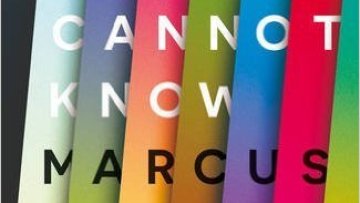11:00
11:00
The rolling of dice in a casino, Heisenberg's uncertainty, the meaning of consciousness. All are explored as Marcus takes us on a personal journey into the realms of the scientific unknown. Are we forever incapable of understanding all of the world around us or is it perhaps just a question of language, not having the right words to describe what we see?
16:00
Curves and their fundamental groups
Abstract
I will describe a sketch of the proof of Grothendieck conjecture on fundamental groups.
A metric and geometry for heterotic moduli
Abstract
Heterotic vacua, defined with a holomorphic bundle and connection satisfying hermitian Yang-Mills, realise four-dimensional chiral gauge theories. We exploit the rich interplay between four-dimensional physics, supersymmetry and geometry to construct a natural Kaehler metric for the moduli space, with a shockingly simple Kaehler potential. Along the way, we discover a natural geometric structure for the heterotic moduli.
On-shell recursion at one loop in pure Yang-Mills theory, to an extent.
Abstract
Loop computations put the 'quantum' into quantum field theory. Much effort has focused on their structure and properties, with most spectacular progress in maximally supersymmetric gauge theories in the planar limit. These theories are however quite far from reality as described for instance in the standard model of particle physics. In this talk I'll report on ongoing work using BCFW on-shell recursion to obtain loop amplitude integrands in a much more realistic theory, pure Yang-Mills theory, using methods which apply directly to the standard model.
Sorting of micro-swimmers in flowing visco-elastic fluids
Abstract
Interactions between micro-swimmers and their complex flow environments are important in many biological systems, such as sperm cells swimming in cervical mucus or bacteria in biofilm initiation areas. We present a theoretical model describing the dynamics of micro-organisms swimming in a plane Poiseuille flow of a viscoelastic fluid, accounting for hydrodynamic interactions and biological noise. General non-Newtonian effects are investigated, including shear-thinning and normal stress differences that lead to migration of the organisms across the streamlines of the background flow. We show that micro-swimmers are driven towards the centre-line of the channel, even if countered by hydrodynamic interactions with the channel walls that typically lead to boundary accumulation. Furthermore, we demonstrate that the normal stress differences reorient the swimmers at the centre-line in the direction against the flow so that they swim upstream. This suggests a natural sorting mechanism to select swimmers with a given swimming speed larger than the tunable Poiseuille flow velocity. This framework is then extended to study trapping and colony formation of pathogens near surfaces, in corners and crevices.
16:00


